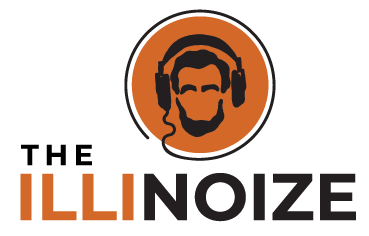The State Shouldn't Be in the Stadium Business
The White Sox are trying to get the state to pay for new renovations or a new ballpark, but the state shouldn’t be funding stadium projects with tax dollars.
NOTE: This story was originally posted for subscribers only. To receive subscriber-only newsletters and content, click here.
OPINION
When word leaked this week that Chicago White Sox owner Jerry Reinsdorf was prepared to move his team from Chicago’s south side at the end of their current lease in 2029, it became the second professional sports franchise in Chicago trying to shake down taxpayers for a new, or majorly renovated, stadium.
Unlike Solider Field, which the Chicago Bears are haphazardly threatening to move away from, the state fully owns Guaranteed Rate Field, formerly U.S. Cellular Field, formerly ‘new’ Comiskey Park, where the White Sox have played since 1991.
But there’s little incentive for lawmakers to get behind hundreds of millions in bonds to either build a new stadium or majorly renovate Guaranteed Rate Field because, frankly, it has a low Return on Investment.
Yes, I’m a Cubs fan, so you can take my opinions with a grain of salt. But I’ve always said as a downstater, my ire is squarely for the St. Louis Cardinals than it is for the Sox.
Objectively, the White Sox aren’t a draw. In the past ten seasons (there were no fans in 2020 and numbers were skewed in 2021 due to capacity restrictions), the White Sox have only broken into the top 20 in Major League Baseball attendance once, in 2022, when they were 19th out of 30 MLB teams.
In that time, they have struggled to top 20,000 fans per game. The 2019 season, their best, still averaged under 25,000 per game, less than 60% of the stadium capacity.
The Cubs, meanwhile, have averaged between 4th and 11th in MLB attendance, ranging from around 32,000 last year to just under 40,000 per game in 2016, the year the club won the World Series. Wrigley Field has a capacity of around 42,000. (The Cubs own their own stadium, by the way.)
The White Sox have long been less popular than their northside rivals, but why would a new ballpark across the street or as part of the proposed “The 78” development on the near south side, the U.S. Steel site on the far south side, or Orland Park or a cornfield in Kankakee County magically fix the organization’s attendance problems?
While the Bears are trying to bail on Soldier Field, the state still owes some $600 million on bonds issued for renovations that were completed 20 years ago next month.
The state still owes around $50 million on construction and later renovations at Guaranteed Rate Field, but those should be paid down by the time the Sox lease ends in six years.
But, let’s be serious about what the state should be spending money on.
For the first time in two decades, with plenty of help from federal dollars pumped into the economy, the state’s financial picture is improved from a near constant dumpster fire. It is still tenuous. It is still held together for the next year with some gimmicks, magic, and duct tape.
A stadium project wouldn’t come from the General Revenue Fund, but the money has to come from somewhere. The Soldier Field renovation was paid for primarily through an increase to the city’s hotel tax. What are you going to do, tack on another in the Loop? Or a food and beverage tax on southside businesses? It’s bad for business and still forces taxpayers to pay more for a facility that only gets used 81 times per year and is barely half full for most of those uses.
No thanks.
In an era of mega TV contracts for professional sports leagues, sky high valuations for franchises (the Bears are valued at $5.8 billion, the Cubs at $4.1 billion, the White Sox at $2.05 billion), and all of the money that flows through billionaire owners, there is no rational reason taxpayers should pay for these facilities.
If that means the Bears want to split and build a stadium in Arlington Heights (good luck finding the money) or the White Sox want to head off to Nashville, it’s a net positive for city and state taxpayers.
Let’s spend the money where it counts, and it isn’t ballparks and football stadiums.



